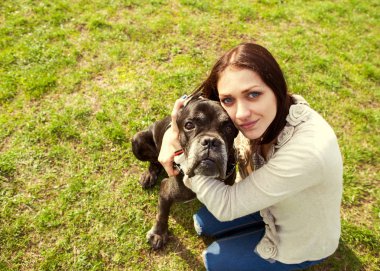
How Much Exercise Does A Cane Corso Need (7 Helpful Guidelines)
How much exercise does a Cane Corso need? This powerful and energetic breed requires regular physical activity to maintain its health and happiness. Proper exercise not only keeps a Cane Corso fit but also helps manage its high energy levels and prevent behavioral issues.
A Cane Corso, with its powerful build and spirited nature, isn’t just any dog—it’s a majestic powerhouse requiring a fine balance of physical exertion and mental stimulation. Imagine channeling the energy of a small tornado into daily walks, runs, and engaging activities. This breed thrives on a regimen that challenges both its muscular frame and keen intellect, making the question of how much exercise it needs not just important, but essential to its well-being. Discover the ideal exercise routine to keep your Cane Corso not only fit and healthy but also happy and well-behaved.
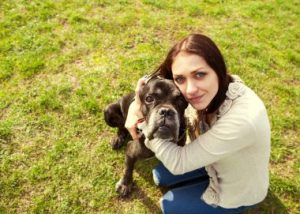
How Much Exercise Does A Cane Corso Need
A Cane Corso needs a substantial amount of exercise to stay healthy and happy. Typically, they require at least 1-2 hours of physical activity daily. This breed thrives on vigorous exercise, such as running, hiking, and playing fetch. Without adequate exercise, Cane Corso can become bored and develop behavioral issues. Regular mental stimulation and socialization are also crucial for their well-being.
Daily Exercise Requirements
The Cane Corso, a powerful and athletic breed, demands consistent and vigorous exercise to maintain its physical and mental health. Owners should aim to provide their Cane Corso with a minimum of 1-2 hours of exercise every day. This exercise regimen should include a variety of activities to engage both their body and mind. Walking is essential but not sufficient on its own. Cane Corso benefit from running in open spaces, playing fetch, and engaging in agility training.
These activities help to burn off their boundless energy and keep their muscles toned. Given their working dog heritage, Cane Corso also excel in tasks that challenge their intelligence and instincts, such as obedience training, advanced commands, and interactive games. Without regular and diverse exercise, Cane Corsos are prone to becoming bored, which can lead to destructive behaviors and anxiety.
Mental Stimulation and Socialization
In addition to physical exercise, mental stimulation is crucial for a Cane Corso’s overall health. These intelligent dogs need activities that challenge their minds. Puzzle toys, scent work, and training sessions that introduce new commands or tricks are excellent ways to keep their brains engaged.
Socialization is another key aspect of their exercise needs. Cane Corsos should be exposed to different environments, people, and other animals from a young age to develop into well-rounded adults. Regular interaction with other dogs and people helps to prevent aggression and anxiety, ensuring that they grow up to be confident and friendly companions.
Exercise Tips for Cane Corso Owners
For Cane Corso owners, it’s important to establish a consistent exercise routine that caters to the breed’s high energy levels. Incorporate a mix of physical and mental activities to keep your dog happy and healthy. Consider incorporating structured play sessions, such as tug-of-war or agility courses, which can be both fun and physically demanding.
Swimming is another excellent form of exercise for Cane Corsos, providing a low-impact workout that is gentle on their joints. Always ensure that your Cane Corso has access to fresh water and shade during exercise, especially in hot weather, to prevent overheating. Regular vet check-ups are also essential to monitor their health and ensure they are fit for their exercise routines.
Exercise Needs of a Cane Corso
General Exercise Requirements
Cane Corsos, like many large and powerful breeds, require a well-rounded exercise regimen to maintain their physical health and mental well-being. Adult Cane Corsos benefit from at least 60 to 90 minutes of exercise daily, which helps to channel their energy and reduce the risk of obesity and related health issues. This can include brisk walks, runs, and playtime in a secure yard.
Puppies and adolescents, while full of energy, should have their exercise carefully moderated to prevent strain on their developing bones and joints. Shorter, more frequent bouts of play and gentle exercise are recommended, gradually increasing in duration and intensity as they mature. Senior Cane Corsos, though less active, still need regular, gentle exercise to maintain mobility and overall health.
Different types of exercise play vital roles in meeting a Cane Corso’s needs. Aerobic exercise, such as walking, running, or playing fetch, helps to keep their cardiovascular system healthy and burns off excess energy. Strength training, which can include activities like tug-of-war or climbing hills, helps to build and maintain muscle mass, which is crucial for supporting their large frame.
Mental stimulation is equally important for this intelligent breed. Engaging them in activities that challenge their mind, such as obedience training, puzzle toys, and scent games, can prevent boredom and the development of destructive behaviors. A balanced exercise regimen that includes aerobic activity, strength training, and mental challenges is essential for the overall well-being of a Cane Corso at any stage of life.
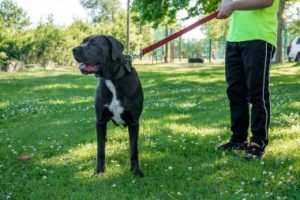
Factors Influencing Exercise Needs
The exercise needs of a Cane Corso, a large and muscular breed known for its strength and agility, are influenced by various factors. Age plays a significant role; puppies require shorter, more frequent bursts of activity to avoid overexertion and support their growing bodies, while adult Cane Corsos benefit from longer, more vigorous exercise sessions to maintain their muscle tone and overall health. Senior dogs may need gentler, low-impact activities that accommodate their decreased stamina and potential joint issues.
Health status is another critical factor; a Cane Corso with underlying health problems, such as hip dysplasia or heart conditions, will need a tailored exercise regimen that avoids exacerbating their conditions, often requiring veterinary guidance. Individual energy levels also vary within the breed; some Cane Corsos may have high energy and require extensive daily exercise, including long walks, running, and mental stimulation through training or play, while others may be more laid-back and content with moderate physical activity.
Environmental factors significantly influence exercise needs; those living in urban areas might need more structured exercise opportunities, such as visits to dog parks or participation in canine sports, to compensate for limited space, whereas those in rural settings can benefit from more natural, expansive areas to explore.
Weather conditions also matter; extreme heat or cold can affect the duration and type of exercise suitable for a Cane Corso, requiring adjustments to prevent heatstroke or hypothermia. Understanding and balancing these factors is crucial to ensuring the Cane Corso’s physical and mental well-being, promoting a healthy, happy life for this powerful breed.
Exercise Routine for a Cane Corso
Daily Walks
Creating an effective exercise routine for a Cane Corso involves a balance of physical activity and mental stimulation to keep this large, intelligent, and energetic breed healthy and happy. Daily walks are essential, typically lasting between 60 to 90 minutes, split into two sessions—one in the morning and another in the evening. This duration ensures that the Cane Corso gets ample time to expend its energy while also preventing boredom and potential behavioral issues. Frequency is key, with daily walks being a non-negotiable part of the routine. On particularly active days, additional shorter walks or play sessions can be included to further meet their exercise needs.
Leash training is crucial for a breed as powerful as the Cane Corso. Start with basic obedience training to establish control and ensure the dog responds well to commands such as “sit,” “stay,” and “heel.” This foundation is important for safely managing their strength during walks. Using a sturdy, comfortable leash and collar, practice leash control by maintaining a steady pace and gently correcting any pulling or lunging.
Consistent reinforcement and positive rewards for good behavior will help solidify proper leash manners. Socializing your Cane Corso during these walks is also beneficial, exposing them to different environments, people, and other dogs, which helps in developing a well-rounded and confident demeanor. Remember, mental stimulation is as important as physical exercise, so incorporate varied routes, interactive toys, and occasional off-leash play in safe, enclosed areas to keep your Cane Corso engaged and satisfied.
High-Intensity Activities
High-intensity activities are particularly beneficial for this breed, as they help to maintain their muscular build and mental sharpness. Running and jogging are excellent ways to engage a Cane Corso, providing them with the cardiovascular workout they need. These activities should be done in a safe, controlled environment, ensuring the dog is always hydrated and not overexerted, especially in hot weather.
Fetch and other interactive games are also highly recommended, as they not only provide physical exercise but also stimulate the dog’s mind and reinforce the bond between the dog and its owner. Using toys like balls or Frisbees can make these sessions more engaging and enjoyable for the dog.
Additionally, agility training can be a fantastic way to challenge a Cane Corso both mentally and physically. Setting up an agility course with obstacles like jumps, tunnels, and weave poles can improve the dog’s coordination, obedience, and confidence. It’s important to start slowly and gradually increase the difficulty of the exercises, always ensuring that the dog’s joints and muscles are not strained. Regular, high-intensity exercise routines tailored to the Cane Corso’s needs can lead to a healthier, happier, and more well-behaved companion.
Socialization
Creating a well-rounded exercise routine for a Cane Corso, a powerful and intelligent breed, is essential not only for their physical health but also for their socialization. These dogs thrive on structured activities that challenge both their bodies and minds. Incorporating dog parks and playdates into their routine can be highly beneficial. Dog parks offer a safe environment where Cane Corsos can interact with various dogs, helping them to develop proper social behaviors and reduce the likelihood of aggression. Playdates with familiar dogs provide a controlled setting for more focused socialization and play, strengthening their social skills in a relaxed environment.
Additionally, enrolling in training classes and group activities can significantly enhance a Cane Corso’s socialization process. Training classes not only instill obedience and discipline but also expose them to different people and dogs, fostering adaptability and reducing anxiety in unfamiliar situations. Group activities such as agility courses or obedience competitions cater to their high energy levels and working instincts, ensuring they receive adequate mental and physical stimulation. This combination of exercise and socialization is crucial for maintaining a balanced, well-behaved Cane Corso, ultimately contributing to their overall well-being and making them a more enjoyable companion.
Mental Stimulation
Creating an effective exercise routine for a Cane Corso involves not only physical activities but also mental stimulation to keep this intelligent and active breed satisfied. For physical exercise, Cane Corsos benefit from daily walks, runs, and playtime in a secure yard. However, their mental stimulation is equally important. Incorporating puzzle toys and interactive games can provide significant mental engagement.
These toys challenge their problem-solving skills and can keep them occupied for extended periods. Obedience training and trick training are also essential for mental stimulation. These sessions reinforce good behavior, enhance the bond between the dog and owner, and provide the Cane Corso with a sense of purpose. Teaching them new commands or tricks can be an enjoyable and rewarding experience for both parties.
Additionally, scent work and nose games are highly beneficial for Cane Corsos. These activities tap into their natural instincts and can be done through simple hide-and-seek games with treats or more structured nose work exercises. By incorporating a combination of physical exercise and these mental stimulation activities, you can ensure that your Cane Corso remains happy, healthy, and well-behaved.
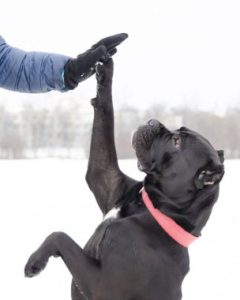
Adjusting Exercise for Different Life Stages
Puppies
Adjusting exercise for puppies involves understanding their unique developmental needs and ensuring their activities are safe and beneficial for their growth. Socialization is crucial during the early stages of a puppy’s life, as it helps them become well-adjusted and confident adults. This period, typically between 3 to 14 weeks, is when puppies are most receptive to new experiences.
Gentle, positive interactions with different people, other animals, various environments, and a variety of sounds and sights can significantly impact their social development. Alongside socialization, puppies require gentle exercise to help build their muscles and coordination without overstraining their developing bodies.
Playful activities such as fetch, short walks, and interactive toys can provide the right balance of physical exertion and mental stimulation. It’s important to monitor their activity levels and avoid strenuous exercises that could harm their growing bones and joints. Regular, short sessions of play and exploration not only help in physical development but also in creating a strong bond between the puppy and their owner. Thus, the right mix of socialization and gentle exercise lays the foundation for a healthy, happy, and well-rounded dog.
Adolescents
Adjusting exercise for Cane Corso adolescents involves carefully managing their energy levels and providing structured exercise routines tailored to their developmental needs. During adolescence, typically between six months and two years of age, Cane Corsos are brimming with energy and enthusiasm. This high energy level requires outlets to prevent destructive behaviors and to ensure their mental and physical well-being.
To manage their energy levels effectively, it is crucial to incorporate a balanced mix of activities that challenge them both physically and mentally. Structured exercise routines are key to this balance. These routines should include daily walks, play sessions, and basic obedience training to instill discipline and provide mental stimulation. Incorporating activities such as fetch, agility training, or structured play dates with other dogs can help expend excess energy while promoting socialization skills.
Additionally, it’s important to adjust the intensity and duration of exercise based on the individual dog’s needs and growth stages, as over-exertion can lead to injuries in growing joints and bones. By creating a well-rounded exercise plan that adapts to their changing energy levels and developmental stages, owners can ensure their Cane Corso adolescents grow into healthy, well-adjusted adults.
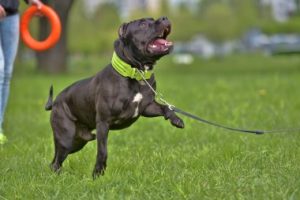
Adults
Adjusting exercise for Cane Corso adults is crucial to maintaining their fitness and preventing boredom, both of which are essential for their overall well-being. These powerful and intelligent dogs thrive on regular physical activity, which helps to keep their muscular build and cardiovascular system in optimal condition.
For maintaining fitness, a mix of activities such as brisk walks, jogging, and play sessions can provide the necessary physical exertion. These activities should be tailored to the dog’s individual energy levels and health status, ensuring they are challenging enough to promote muscle tone and endurance without causing strain. Incorporating varied routines, like agility training or swimming, can also be beneficial, as these exercises engage different muscle groups and prevent overuse injuries.
Preventing boredom in Cane Corso adults is equally important, as these dogs are highly intelligent and can become destructive if not mentally stimulated. Providing interactive toys, puzzle feeders, and training sessions can keep their minds engaged. Incorporating obedience training and advanced commands during exercise routines not only reinforces good behavior but also keeps their minds sharp.
Seniors
Adjusting exercise for senior Cane Corsos involves tailoring the intensity and duration of activities to suit their aging bodies. As these majestic dogs age, their energy levels naturally decline, and they become more prone to joint issues and arthritis. Therefore, it is crucial to moderate the intensity of their exercise to prevent undue strain on their muscles and joints. Shorter, more frequent walks can replace longer, more strenuous ones, ensuring they remain active without overexertion.
Low-impact activities are especially beneficial for senior Cane Corsos. Swimming, for instance, is an excellent way to maintain their fitness and muscle tone without putting excessive stress on their joints. Gentle play sessions that involve less jumping and running, such as fetch in a controlled environment or slow-paced tug-of-war, can also keep them mentally and physically stimulated.
Additionally, incorporating exercises that focus on balance and coordination, such as walking over low obstacles or through shallow water, can help maintain their agility. It’s important to monitor their response to exercise closely, watching for signs of fatigue or discomfort, and adjusting the activity level accordingly. Regular veterinary check-ups can provide further guidance on appropriate exercise routines and help manage any underlying health conditions, ensuring that senior Cane Corsos continue to enjoy a good quality of life.
Signs of Over- or Under-Exercise
Over-Exercise
Over-exercise in a Cane Corso, a robust and powerful breed, can manifest through various physical and behavioral signs. Physically, you might observe limping or an altered gait, indicating potential joint or muscle strain. Fatigue is another key indicator; a dog that was once energetic and eager for activity may become unusually lethargic and less enthusiastic about exercise or play. Soreness and stiffness, particularly after periods of rest, can also be evident, along with visible signs of discomfort when moving or being touched.
Behavioral changes often accompany these physical symptoms. An over-exercised Cane Corso might display increased irritability, becoming snappy or uncharacteristically aggressive. They may also exhibit avoidance behaviors, such as hiding or distancing themselves from their owners, possibly to avoid further physical exertion or pain. Additionally, there might be a noticeable decline in their overall mood and interest in activities they once enjoyed. Monitoring these signs and adjusting their exercise routine accordingly is crucial to ensure their well-being and prevent long-term health issues.
Under-Exercise
A Cane Corso that is not getting enough exercise often exhibits various physical and behavioral signs that indicate under-exercise. Physically, one of the most noticeable signs is weight gain due to excess calories not being burned off through physical activity. This breed is naturally muscular and athletic, so poor muscle tone and a flabby appearance are clear indicators that the dog is not getting sufficient exercise.
Additionally, their coat may become dull, and they might develop joint stiffness or other health issues related to inactivity. Behaviorally, a Cane Corso that is under-exercised can become restless and anxious, often displaying signs of pent-up energy. This can manifest as excessive barking, whining, or pacing. Destructive behaviors such as chewing furniture, digging, or shredding household items are also common, as the dog tries to find an outlet for its energy.
In some cases, they may become more aggressive or display other signs of frustration. Furthermore, these dogs may become hyperactive indoors, struggling to settle down and constantly seeking attention from their owners. Recognizing these signs early and addressing the dog’s exercise needs is crucial for maintaining their physical health and mental well-being.
Special Considerations
Health Conditions
The Cane Corso, a robust and powerful breed, requires careful attention to specific health conditions to ensure a long and healthy life. Hip dysplasia is a significant concern, characterized by the malformation of the hip joint that can lead to arthritis and mobility issues. Regular veterinary check-ups, maintaining a healthy weight, and providing joint supplements can help manage and prevent the severity of this condition. Joint issues, in general, are prevalent in Cane Corsos due to their large size and active nature. Conditions such as elbow dysplasia and ligament injuries can also affect their overall mobility and comfort.
Heart conditions, including dilated cardiomyopathy (DCM) and aortic stenosis, are other serious health concerns in this breed. These heart diseases can lead to heart failure if not diagnosed and managed early. Routine heart screenings and a heart-healthy diet are essential preventative measures.
Additionally, Cane Corsos may face other breed-specific health concerns such as eyelid abnormalities like entropion and ectropion, which can cause discomfort and require surgical correction. Skin allergies and bloat (gastric dilatation-volvulus) are also notable issues that require prompt attention. Given these potential health risks, prospective Cane Corso owners should seek reputable breeders who perform thorough health screenings and are committed to maintaining the breed’s health standards. Regular veterinary care, a balanced diet, appropriate exercise, and early socialization and training are crucial for managing these health conditions and ensuring a happy, healthy Cane Corso.
Climate Considerations
When caring for a Cane Corso, special considerations regarding climate are crucial to ensure the dog’s health and well-being. In hot weather, these dogs, with their dense, short coats and muscular builds, are particularly susceptible to heat exhaustion and heat stroke. Owners must provide ample shade, fresh water, and avoid vigorous exercise during the peak heat of the day, opting instead for early morning or late evening walks. Cooling mats, fans, and even kiddie pools can help keep them comfortable.
Conversely, in cold weather, Cane Corsos are prone to cold-related issues due to their short coat, which offers minimal insulation. Providing a well-fitted dog coat, limiting time outside in extreme cold, and ensuring a warm, draft-free indoor space are essential measures. It’s also important to inspect their paws for signs of ice or salt damage, and to clean and dry them thoroughly after outdoor excursions.
Seasonal adaptation of exercise routines is vital; in summer, incorporating water-based activities or indoor play can help maintain fitness without overheating. In winter, shorter, more frequent walks and indoor exercise can prevent exposure to harsh conditions while keeping the dog active. Understanding and addressing these climate-related needs will help ensure that a Cane Corso remains healthy, comfortable, and happy throughout the year.

Tips for Successful Exercise Regimens
Consistency and Routine
Establishing a successful exercise regimen for a Cane Corso involves a balance of consistency and variety. First and foremost, establishing a daily schedule is crucial. This powerful and intelligent breed thrives on routine, so setting specific times each day for exercise can help create a sense of stability and anticipation. Morning walks can be particularly beneficial, as they help burn off energy and set a positive tone for the day.
In addition to walks, incorporating a variety of exercises is essential to keep your Cane Corso mentally and physically stimulated. This can include activities such as running, agility training, and interactive play sessions. Balancing different types of exercise not only ensures comprehensive fitness but also prevents boredom, which is key for a breed known for its intelligence and need for mental engagement.
It’s also important to adjust the intensity and duration of the exercise based on your dog’s age, health, and energy levels, gradually increasing as they build stamina. Regularly incorporating obedience training into exercise routines can further enhance their mental stimulation and reinforce good behavior. Overall, a well-rounded exercise regimen tailored to your Cane Corso’s specific needs will promote a healthier, happier, and more well-behaved dog.
Positive Reinforcement
Positive reinforcement is crucial, where rewarding good behavior with treats and praise encourages desired actions during exercise sessions. This method not only motivates your dog but also strengthens the bond between you and your Cane Corso. Utilizing treats effectively means choosing high-quality, small-sized treats that your dog finds irresistible, ensuring they are reserved solely for exercise rewards to maintain their effectiveness.
Alongside treats, verbal praise in a cheerful and encouraging tone reinforces the positive behavior your Cane Corso displays during workouts, reinforcing the idea that exercise is a rewarding and enjoyable experience. This approach not only enhances your dog’s physical fitness but also fosters a positive attitude towards regular exercise, ensuring a healthier and happier Cane Corso overall.
Monitoring and Adjusting
To ensure a successful exercise regimen for your Cane Corso, monitoring and adjusting are crucial practices. Start by keeping meticulous track of your dog’s exercise routines, noting the duration, intensity, and type of activities they engage in. This helps in understanding their physical capabilities and ensuring they receive adequate exercise without overexertion.
Regularly observe your dog’s responses during and after exercise sessions to gauge their energy levels, breathing, and overall demeanor. Adjust the exercise regimen accordingly based on these observations and your dog’s individual needs. Some days they may require more vigorous activities to burn excess energy, while on others, gentler exercises like walking or swimming might be more suitable. By maintaining a flexible approach and staying attuned to your Cane Corso’s cues, you can optimize their fitness and well-being through tailored exercise routines.
FAQs: How Much Exercise Does A Cane Corso Need
Q1. How much daily exercise does a Cane Corso require?
A. A Cane Corso needs at least 1 to 2 hours of exercise daily. This can include a mix of walks, playtime, and mental stimulation to keep them healthy and happy.
Q2. Can I break the exercise into multiple sessions?
A. Yes, breaking exercise into two or three sessions throughout the day is beneficial. This approach helps maintain their energy levels and prevents boredom.
Q3. What types of exercises are best for a Cane Corso?
A. Cane Corso enjoy a variety of exercises, including long walks, jogging, hiking, fetch, and agility training. They also benefit from mental challenges like puzzle toys and obedience training.
Q4. Is a fenced yard necessary for a Cane Corso?
A. While a fenced yard is ideal for additional play and exercise, it is not mandatory. Regular walks and interactive playtime can suffice, but having a secure area allows for more freedom to run and explore.
Q5. How important is mental stimulation for a Cane Corso?
A. Mental stimulation is crucial for Cane Corso. These intelligent dogs need activities that challenge their minds, such as training sessions, puzzle toys, and interactive games, to prevent boredom and destructive behaviors.
Q6. Can a Cane Corso get enough exercise indoors?
A. While some indoor activities like tug-of-war and hide-and-seek can contribute to their exercise needs, Cane Corso generally require outdoor activities to meet their physical exercise requirements fully.
Q7. How do I know if my Cane Corso is getting enough exercise?
A. A well-exercised Cane Corso will be calm and relaxed at home. If your dog is showing signs of restlessness, hyperactivity, or destructive behavior, it may need more physical or mental exercise.
Q8. Are Cane Corso good running partners?
A. Yes, Cane Corso can be excellent running partners due to their athletic build and stamina. Start with shorter runs and gradually increase the distance to build their endurance.
Q9. Can senior Cane Corso still exercise?
A. Senior Cane Corso need regular exercise, but it should be adjusted to their age and health condition. Gentle walks, swimming, and low-impact activities are ideal for older dogs to keep them fit without straining their joints.
Q10. What are the signs of over-exercising a Cane Corso?
A. Signs of over-exercising include excessive panting, limping, reluctance to move, and extreme fatigue. If you notice these symptoms, allow your dog to rest and consult a vet if necessary.
Conclusion
A Cane Corso, a large and energetic breed, requires a significant amount of exercise to maintain its physical and mental health. Ideally, they need at least one to two hours of vigorous activity daily, including walks, runs, and playtime. Engaging them in activities like obedience training, agility courses, and mental stimulation games can also be beneficial. Regular exercise helps manage their weight, prevents behavioral issues, and strengthens the bond between the dog and its owner. Providing a Cane Corso with adequate exercise ensures a happy, healthy, and well-adjusted companion.